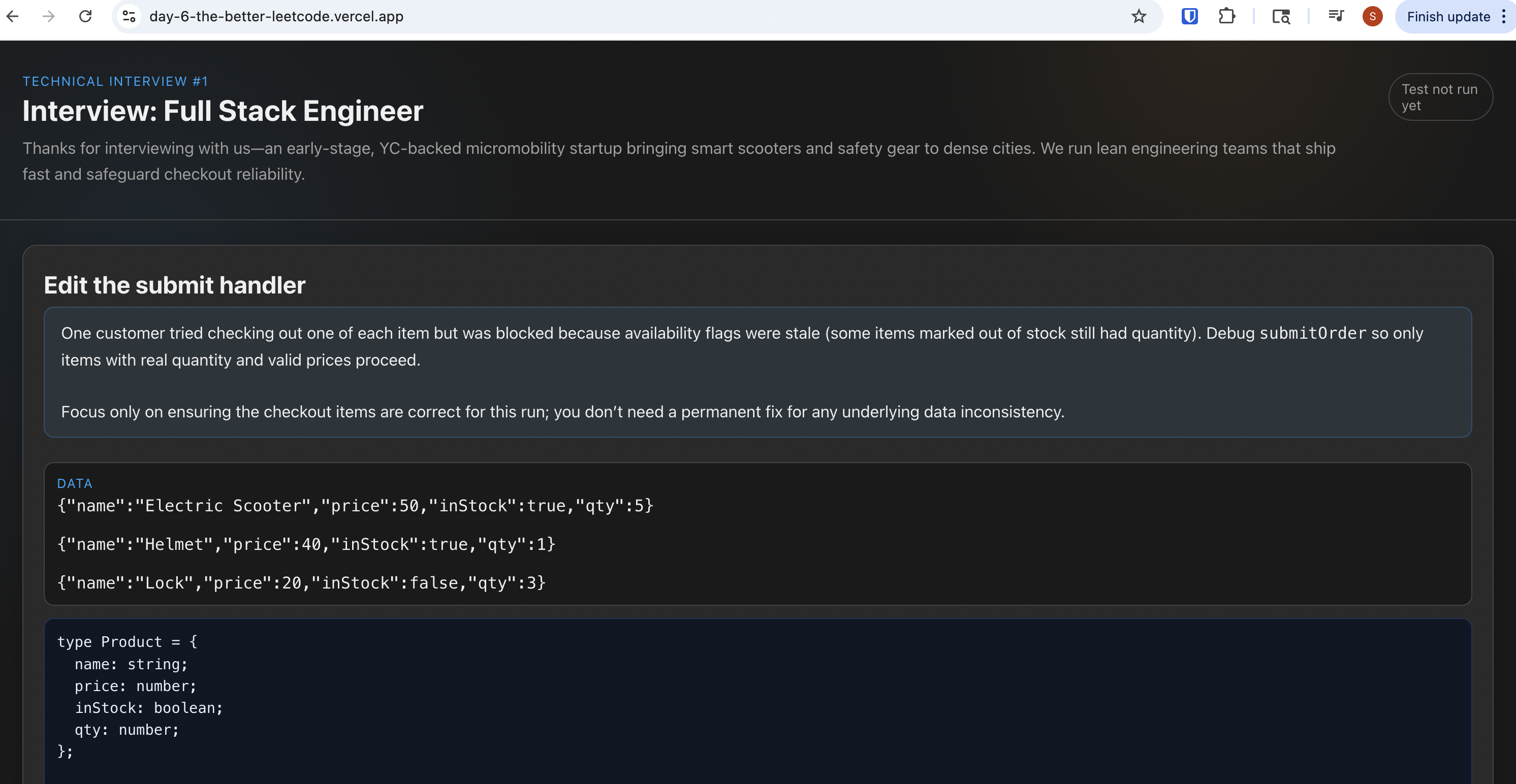💻 We Need a Better LeetCode
day-6-the-better-leetcode.vercel.app
(Do give it a shot, and see if you can find the bug.)
In today’s world — especially in startups — we have to ship well and ship FAST.
Why make job applicants solve puzzles they can memorize with practice?
Instead, hand them a real production issue and see how quickly and safely they can ship a fix.
In 🚀 Day 6 of my Turning My Curiosity into Code Until I Land a Tech Job series, I built “Better LeetCode,” a break+fix playground where candidates drop into live scenarios with company context (in this case, like a broken checkout) and race from alert to patch.
In this case, I was interviewing for an online wholesaler, so I decided to craft this in the context of one.
Spot the break, build the patch, and validate what really matters: capability under pressure.

Dear CTOs/hiring managers/candidates, let me know if you think this is the way forward for new-age technical interviews! I would love to hear your comments and include more features!
🧪 The Plan
Stack: React, Node/Express
Idea: Have the candidate understand the overall code structure, find out why it’s failing, and try to fix it
Speed aids: Pre-seeded logs, feature flags, and one-click test runner (but this comes with its drawbacks, which I will mention below)
After two sprints, I could drop in a “checkout fails on promo” incident and time myself from first log to verified fix.
💡 Self Reflection
Feedback loops win: Immediate tests and logs cut time-to-recover more than adding more challenges. BUT currently the checks are instant through various guardrails, but this is not foolproof. With a small budget, implementing an LLM API to check whether the real issue has been resolved would be a better option.
Realistic + Practical > Clever: Fixing production bugs reveals habits (logs, hypotheses, rollbacks) that puzzles never show. It opens up candidates’ “bridge” between front-end and back-end.
Hints available: Light prompts kept momentum for nervous candidates without handing over the answer.
🔁 If I Had More Time
- Add more types of questions, contextualized to a company’s daily operations (using LLMs)
- Add different language compatibility (Python, Go)
- Have more metrics assessment: time-to-first-signal, rollback vs. hotfix rates
- Generate smarter scenarios that mutate bugs (null data, rate limits, schema drift) to avoid memorization by candidates
I’m currently looking for software engineering roles (backend, full-stack, or automation-focused), based in Seattle — open to relocation within the United States.
🤝 Want a demo or to jam on similar ideas? Let’s talk!
🔗 LinkedIn: https://www.linkedin.com/in/sinclair-lim/
🔗 X: @sinclairlimzy
🔗 Portf